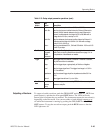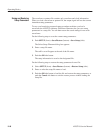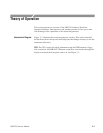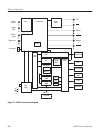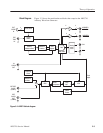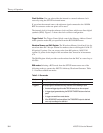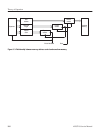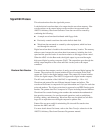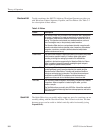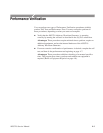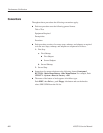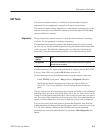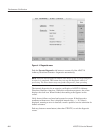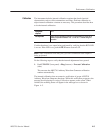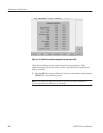
Theory of Operation
AWG710 Service Manual
3-7
Signal Edit Process
This subsection describes the signal edit process.
Load the desired waveform data to be output into the waveform memory. New
waveform data can be created using waveform editors incorporated in the
AWG710 Arbitrary Waveform Generator. New data can also be created by
combining the following:
H A sample waveform data distributed with floppy disks.
H Previously created waveform data on the built-in hard disk.
H Waveform data measured or created by other equipment, which has been
read through the network.
Digital waveform data is loaded to the waveform memory location. The memory
address control extracts the waveform data from memory, including the clock
speed and the specified order of waveforms relative to the trigger event control.
When the AWG is in the Run mode, the digital output is processed through a
high speed digital to analog converter (DAC). The output then goes through the
analog output amplifier to the offset and filter circuitry and to the output
connector.
The waveform data structure consists of analog waveform and digital pattern file
formats. The waveform file format includes 8-bits of resolution for the DAC
output and 2-bits for the digital marker output. The pattern file format includes
10-bits for digital output. (The AWG710 supports two digital marker outputs.)
The full scale resolution of the 8-bit DAC is represented by –1.0 to +1.0.
Waveform and pattern files use different internal formats and editors. The
waveform file format is composed of 4-byte little endian and 1-byte for each data
point and markers. The 4-bytes point data is expressed as an IEEE floating point
number. The pattern data file is composed of 2-bytes including data and markers.
Waveform files contain floating point numbers that maintain the mathematical
data precision necessary for waveform math operations such as multiplying,
dividing, adding, and subtracting. Waveform files may be edited, but are much
larger for an equivalent record length compared to pattern files.
Pattern files are most useful for minimizing file size and file transfer time
between the AWG and a PC.
For more details about file format, refer to the Data Transfer subsection in the
AWG710 Arbitrary Waveform Generator Programmer manual.
Waveform Data Structure



